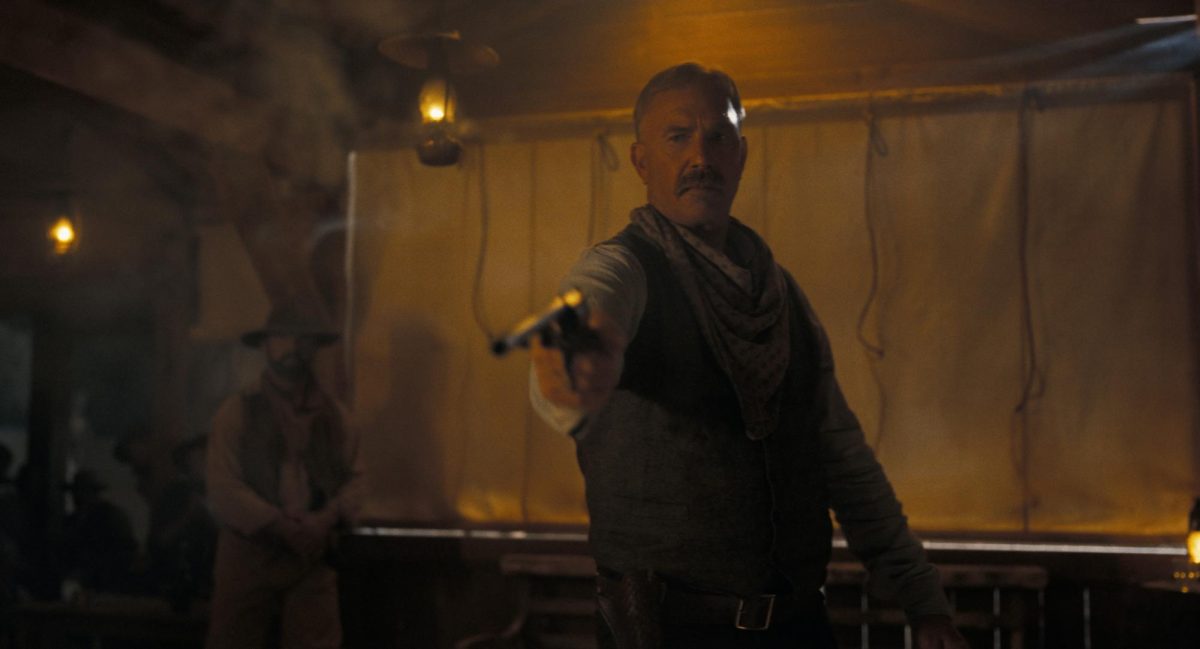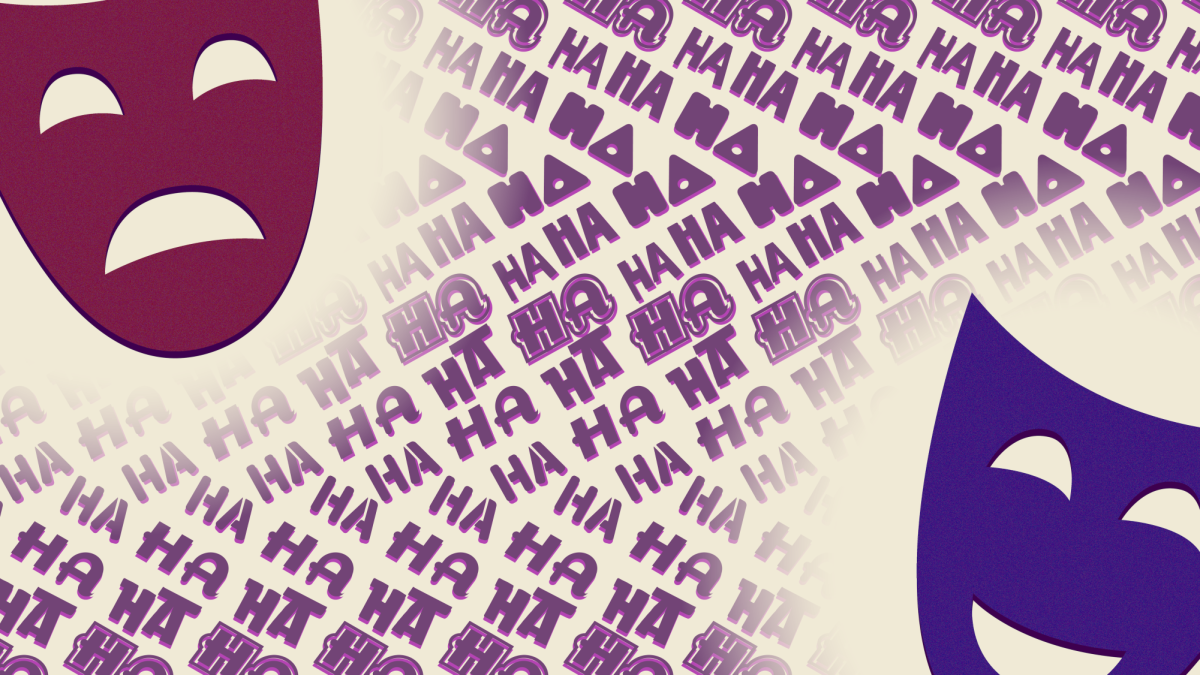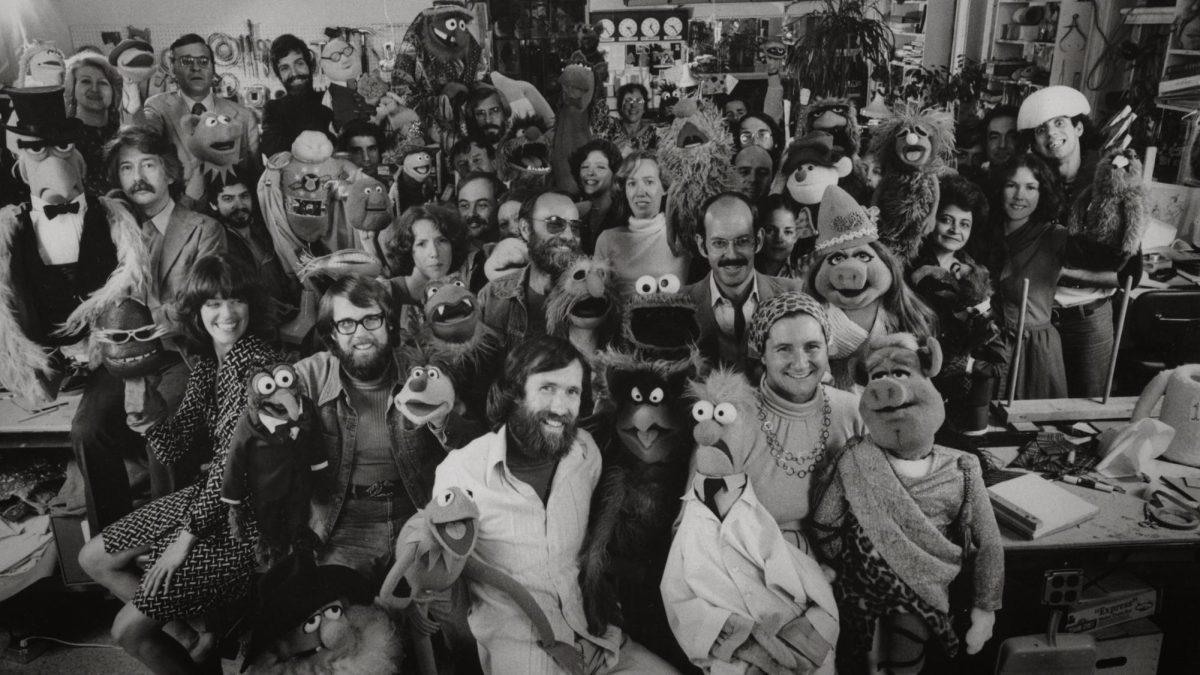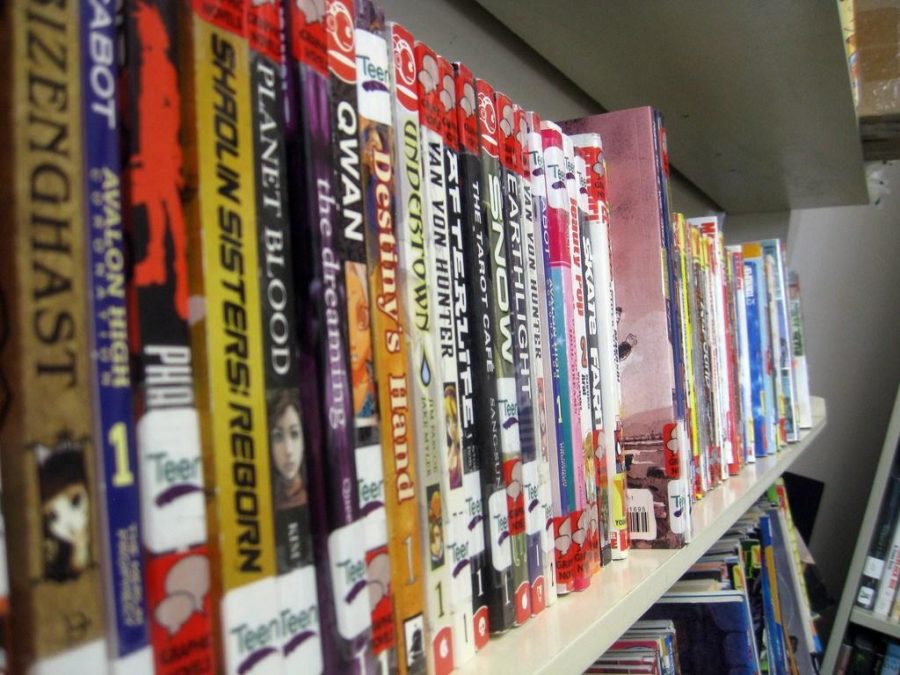When wandering through a bookstore, it is routine for me to stop by the graphic novel section and flip through some of my favorite classics, “Sin City” and “Watchmen,” before skimming the new items. After telling people I read graphic novels, a common response is, “I didn’t know you were into comic books.”
It’s difficult to describe how frustrating it is to answer to that response. Although I do enjoy a good comic now and again, I am quick to respond with a, “No, no, not comics, graphic novels,” elongating the g-r-a-p-h-i-c n-o-v-e-l-s in hopes that the listener will understand the difference — alas, they rarely do.
Yet reading one or the other is a great way to escape the heavy reading of textbooks or classic novels. It can be a fun way for studying students to escape into a world less concerned with finals and essays.
So, it is time to give you my opinion on what separates two very wonderful forms of literature. And yes, they are literature.
“Maus,” a graphic novel created by Art Spiegelman, was the first comic/graphic novel to win the Pulitzer Prize in 1992. Additionally, comics have been inspiring, read, cherished and used for marketing and propaganda in America since the 1930s. This, I believe, qualifies both as true-blue literature.
They have a few things in common that make it easy to mix the two. They are both works of fiction and have panel-style illustrations that do a large part of the storytelling. They are often tied to superheroes and villains, although many modern comics and graphic novels are experimenting with different story lines. But what sets them apart?
Many enthusiasts use binding as the determining factor in whether something is classified as a graphic novel or comic book. Comics, as many of you are familiar with, use traditional saddle stitching — meaning they are held together with staples in the spine. Graphic novels are bound either in hardback or tradepaper (soft cover) like a book, with a thick spine glued to hold the pages together.
Although this simple explanation is satisfactory and points to a clear physical difference, it is not sufficient. What do we do with a series of “Spider-Man” comics that are bound in a single book? This is where I make a distinction between comic books and graphic novels, and why I tend to read one and not the other.
Comic books are periodicals. They are produced monthly and usually have a good amount of action that progresses the story line forward to the next issue. Graphic novels are read like a book. They delve deeper into the story lines of characters and history, not just action, and they complete the full arch of a narrative by the end of the novel.
This dive into the story and history of characters and events is what sets graphic novels apart. Intricate story lines are, of course, told in comic books, but it can take months before a certain history is explained from a past issue, and it’s easier to introduce and remove characters without much consequence to the overall story line.
Graphic novels have to focus on character development and consistent details, giving me, as a reader, a more satisfying experience.
Absolutely, both forms have their merit, and many readers sway from one to the other occasionally. But for those interested in entering the world of comics and graphic novels, it’s important to recognize the differences and pick the right form.
Is there a key component to graphic novels or comics that make them what they are that is missing here? Comment online and share your opinion.















Angela Lee_KMPh • Mar 17, 2024 at 11:04 pm
The article is clear given the difference between the comic and graphic novel. The main difference that I notice is that the background of the characters. In comic, it is easier to remove the character without so much of consequences to overall of the story line. While for graphic novel, all character have important role which they will focus of the characters development.
Ying Suen kmph • Mar 17, 2024 at 8:42 pm
The article provides a clear explanation of the differences between graphic novels and comic books, outlining factors such as length, format, and thematic complexity. It offers insightful analysis by discussing the evolution of both mediums and their cultural significance.
Mai, KMPh • Mar 17, 2024 at 8:36 pm
Personally, the difference that I see between graphic novels and comics is how the stories are told. Graphic novels usually tell the story more in depth than comic books. Graphic novels include a backstory and a more complex storyline. Comic books, on the other hand, don’t really go into depth with the story because they are published in series, or what you call “episodes.” For people who prefer direct storytelling, comic books are for them. As for me, I really like reading stories with complex backstories, and I like to go more in depth with the story, so I prefer reading graphic novels. To each of their own, I suppose
Balqis • Mar 17, 2024 at 7:45 pm
I think comics are the stories that can continue over months and sometimes years while graphic novels are tend to be much longer than comics books, and also usually have their story lines wrapped up in one or two books.
shuxian KMPh • Mar 13, 2024 at 3:54 am
The article is clear and concise, it separate comics and graphic novels with good explanation. The reader can get different vibe from the article and more understand the differences between comics and graphic novels
Iqbal,KMPh • Mar 13, 2024 at 2:19 am
I think the main difference between a graphic novel and a comic is the how the story are delivered to us as a reader. For graphic novels , the story are quite longer and this depends on the reader , either they are bored with the long storyline or they enjoyed the continuous storyline. For comics, it’s shorter but comics is produced in a short time period . It actually depends on the reader too either they think waiting for the new chapter such a waste of time or they are more curious about what is coming that make they excited to buy. In conclusion, readers have many option to choose using this differences
lyana.kmph • Mar 13, 2024 at 2:04 am
I feel as though Graphic Novel are more suitable for experience reader or matured audience whereas Comic is more suitable for those who wish to explore a new hobby. This is because Comics are shorter and easier to indulge yourself in while Graphic novel is more complex and profound.
haikal • Mar 13, 2024 at 1:47 am
I think, graphic novels have a complete storyline without having to wait for another episodes to come out. On the other hand, comics are usually shorter, serialized works with more episodic storytelling.
nina, kmph • Mar 13, 2024 at 1:43 am
For me, Graphic novels are longer than comic books. Furthermore, graphic novels contain a clear beginning, middle and end and also has complete narratives, whether or not they are part of a larger series while comic books contain excerpts of serialized narratives. It can be difficult to read a comic book if you haven’t read the comic that comes directly before it in series.
ween • Mar 13, 2024 at 1:40 am
I think the difference between graphic novels and comics is their target audience. Graphic novels are often targeted to young adults while comics are often read by teenagers and children.
Zaf, KMPH • Mar 13, 2024 at 1:39 am
I think the main difference between comic books and graphic novels lies in their length, structure, and thematic complexity. Comic books are typically shorter, serialized publications with simpler narratives, while graphic novels are longer, standalone works that often delve into more complex themes and character development. Additionally, graphic novels are usually published as complete stories, whereas comic books are often part of ongoing series.
Lean Wen Jie • Mar 13, 2024 at 1:35 am
In my opinion,the main difference between graphic novels and comic books lies in their length, and storytelling complexity.
Usually, graphic novels are longer, presenting a complete story arc in a single volume.
On the other hand, comic books are shorter, often serialized, and can be part of a larger ongoing narrative.
Mira, KMPh • Mar 11, 2024 at 8:07 pm
i think, there is no huge differences between graphic novels and comics. The main difference is just when you read graphic novels, you can read the whole story without having to wait for another episodes to come out, unlike the comics that you have to wait even a month for an episode to come out. Besides, comics are usually more fictional than graphic novels.
ricky • Mar 11, 2024 at 8:05 pm
Graphic novels are longer, more substantial works resembling traditional novels, with complex narratives and themes. They are bound like books and can contain complete story arcs. Comics, on the other hand, are shorter, serialized narratives usually found in magazines or comic books. They focus on concise storytelling through illustrations and dialogue, often in installments, and prioritize visual storytelling over extensive plot development.
ANAS OUMAR • Nov 25, 2023 at 5:00 pm
The terms Graphic novels and Comic books are often used interchangeably, but they have distinct characteristics, A Graphic novel is a longer and more substantial work that usually tells a complete, self -contained story. it’s a format that allows for more in-depth storytelling and character development. Graphic novel can cover a wide range of genres and themes, and they are often aimed at more mature audience.
On the other hand, Comic Books are typically shorter, serialized publications, often part of ongoing series. they are usually published on the regular schedule and may leave a story incomplete in one issue, encouraging readers to continue buying subsequent ones. Comic Books covers various genres and caters to diverse age groups, from children to adults.
In summary, the primary differences lie in the length, format and narrative structure. Graphic novels more like traditional novels in terms of length and storytelling, While Comic Books are serialized and often shorter, forming part of an ongoing series.
Kingblood • Sep 11, 2020 at 3:53 pm
A graphic novel is basically in The most simplest of terms……… Multiple comic book entries condensed into a single story format. Months for a story to play out like in comic books….. A graphic novel tells the story from start to finish. The difference isn’t all that huge though, except with a graphic novel it’s much easier to remember the my new details of the story because with a comic book you have to wait months and months for a story to pan out and you might forget some things here and there. But was the graphic novel you were less likely to forget the tiny details because you started it (novel) and kept going to the finish.
Sean Leslie • Apr 25, 2020 at 1:19 am
I completely disagree with your assessment because you are wrong. You claim Sin City and Watchmen are graphic novels and not comics. Both your examples were serialized comic books. Sin City was first serialized Dark Horse Presents and later in their own monthly mini-series. Watchmen was a 12 issue maxiseries. These are collected comic books through and through. And serialized comic books do not always equal superheroes. Look at the COMIC BOOKS the Walking Dead, Queen & Country, Stumptown, 300, and hundreds more.
Graphic novels are original stories that are complete and have never been serialized before. Examples: Blankets by Craig Thompson, A Contract on God by Will Eisner, Batman Killing Joke by Alan Moore, Batman Arkham Asylum by Grant Morrison, Signal to Noise by Neil Gaiman, and hundreds more.
What you are trying to to do is make a clear distinction that graphic novels are literate and taking an elitist attitude that comics are for kids and graphic novels are for adults and that could not be further from the truth.
Hannah Cox • Sep 13, 2019 at 3:13 am
I am returning to this as I finish my Master’s thesis, having had much correspondence following on from my previous comment. I came across an essay by Daniel Wullner, published by Narratalogia – he puts forth that comic is a form as well as an individual comic book. Graphic novels are often overlooked when studied as compendiums of serialized comics and we need to move forward in our analyses by recognizing that a comic and graphic novel have the same form. However, a graphic novel may or may not be a compendium of serialized works- it could be a collection (or volume) or a single release issue (what is more officially recognized as the graphic novel). Again, feel free to get in touch- my thesis is very close to being done and I have enjoyed my conversations with people coming from these comments!
Kurtis Lawler • Aug 8, 2019 at 1:22 am
What if a graphic novel is made up of multiple comics in a series? Would that still make it a graphic novel or a collection of comics in a book? The book has a beginning and an end. Also shows character development throughout the story. It has all the makings of a “graphic novel,” but is just a collection of comics. Where would you draw the line between the two? Does this then show they (comic/graphic novel) are one in the same? I read The Walking Dead, but I buy the “graphic novel” books. Is it just a collection of comics or a true graphic novel?
jacob guy • Jan 9, 2019 at 10:37 am
my teacher made me read this
BTW
What about Manga!!!!!
eggdog_stan47 • May 20, 2022 at 12:09 am
same
Tim Yaotome • Jan 8, 2019 at 9:28 pm
I find it awesome that you said that comic books are monthly issues that progress while graphic novels delve into the full narrative of a story, resembling a book. Reading this gave me an idea of what to give my son for his fifth birthday. Any tips on where to find a store that sells first-edition comics of Spiderman?
Patrick Todd Gibson • Oct 22, 2018 at 4:30 pm
I would like to make an ebook or webcomic type story that has illustrations and traditional comic book and graphic novel elements such as the word bubbles and thought bubbles, however, I would also like large sections that are structured like a book where the story can really be told. It seems like graphic novels aren’t really like novels and I would like for my work to be like an illustrated book and I think posting a large percentage online for free and charge right when it gets to the good part would be a good business model. Any advice or thoughts?
Maddi • Apr 1, 2019 at 3:45 am
I have been considering the same thing. I was thinking of using a motion book medium, as it would allow you to move the text forward when needed and pull the pictures to the front when character (using speech bubbles) to talking and back to text when moving on. I am still experimenting with it to see how practical that approach is.
Val k Heike • Sep 26, 2018 at 4:31 pm
So I have Charles Schults original comics you can read the comics as brief stories so grafic novels are stories. If we follow that way of thinking why then is not Charles Schultz grafic novels. Still confussed.
Kyle • Sep 9, 2018 at 6:21 pm
As the saying goes, “You can please some of the people some of the time, but you can’t please all the people all the time.” The same is very true with categorizations and definitions. Purists will always argue why you simply cannot categorize an art form–whether it’s music, graphic art, or literature (including comics and graphic novels). I don’t subscribe to that line of reasoning, however, and believe calling The Sex Pistols punk, and Kendrick Lamar West Coast hip hop and rap is just fine. (And someone will probably skewer me for labeling Kendrick… which is fine 🙂
Hannah Cox • Aug 31, 2018 at 1:35 pm
You say that Maus is a Graphic Novel, yet it was published in stages, as multiple pieces and not a complete story. I agree with the above statements concerning the belittling of the art form. Read Scott Mcloud and Eisner’s theories and the distinction becomes non-existent except in a classist/derogatory “i’m better that this” way. Comics do not wholly focus on action, and japanese comics especially have very drawn out exposition and moment to moment panels. Since the dawn of modern comics (1886), the form has been adopted by more than just the single action centered plot to create amazing in depth stories reflective of the world in it’s most modern form. Please feel free to correspond, I am currently writing my postgraduate thesis on comics, and would love to hear your argument developed further, to see if the distinction between comics and graphic novels, if there is any, can be justified in any way. –
[email protected]
Cambridge, UK
Jen • Jul 1, 2018 at 10:44 pm
I would say putting it simply, graphic novels are published by book publishers, comic books are published by comic book publishers. Comics are periodicals and graphic novels are read like novels. I would highly recommend, the Comic Book History of Comics Books by Fred Van Lente! He explains this concept!
Jasim • Jun 18, 2018 at 9:23 pm
I used to read whatever gets my attention without putting categories in my priorities, now after I was looking for the difference between Graphic and Comic novels I realized that I have been jumping around here and there so thank you all for your contribution to illustrate the differences among literature work!
Jamie • Nov 12, 2018 at 10:03 pm
But still just read what tickles your fancy with no apologies ever! ?
I, so far, don’t enjoy either of those forms (just curious about the difference, is why I’ve been reading this). Liked “the funnies” in the paper, way back in my dad’s day lol. But I love to read and love even more to see a love of reading spread among others — whatever motivates. Pass it on!
laura • Mar 11, 2024 at 8:04 pm
Comics are typically shorter, serialized stories often published in magazines or newspapers, while graphic novels are longer, self-contained narratives with more complex plots and character development. Comics are often episodic and focus on superheroes or humor, while graphic novels explore a wide range of genres and themes, appealing to diverse audiences. Additionally, graphic novels tend to have higher production values and are often published in book format, while comics can vary widely in format and quality.
john • May 17, 2018 at 7:54 am
amazin ma dudes
Billy • May 2, 2018 at 1:18 pm
great
Tessa • Apr 8, 2018 at 4:19 am
My impression is that Comic books are more drawings telling the story with text added (you could almost understand the story without the text), while Graphic Novels are more telling in writing but supported with lots of pictures to make it all more fun and accessible, but you can not necessarily understand the story from the pictures alone..
Edvards • Jan 29, 2019 at 6:38 am
Good point, actually! Kind of true if you think about it although not necessarily always applicable to every story.
Selrisitai • Mar 18, 2018 at 1:11 pm
I don’t agree with your definition, because it suggests that using action to movie a story forward is somehow less deep than having characters talk more.
Frankly, my problem with “graphic novels” is that there’s too much BLOODY exposition, which wouldn’t be so bad — if the writing were really good. I’m reading Lady Mechanika, and I love all of it except some of the writing, where there is, yes, lots of backstory, but it’s hamfisted, clumsy, and tedious. In this way, I say if you’re going to have mediocre writers, you may as well just drive the story forward with action, and there’s nothing shallow about that.
jason haft • Jan 15, 2018 at 12:05 am
In summary, there are many diverse classifications of comics in a variety of genres, but generally there are good comics, and bad ones
Robert Robertson • Mar 14, 2018 at 8:04 pm
Makes sense.
jason haft • Jan 14, 2018 at 11:45 pm
Graphic novel was a term the industry began using in order to cultivate respect for the art form and medium, however in this day and age by holding to such terms, you’re actually belittling the artform. There is no practical distinction, as so few graphic novels have their genesis outside of periodically issued collections of sequential art, and frankly it is an arbitrary one at that. The question of where to draw the line is a meaningless one, graphic novel, one shot, ongoing that gets canceled after issue 2 and winds up a 6 issue mini, a planned 6 issue mini, a limited series, new ongoing creator owned property…?
Emanuel • Oct 24, 2017 at 1:04 pm
Hi. My name is Emanuel. For a time I’ve had this same problem, about how to separate comics from graphic novels, and the same answer was giving to me; one has a thicker spine the other has none, or almost nothing. As a reader you can get a different vibe from that of a comic. But, what about the art in it? The style in which it is presented or reader Dr form? The detail in which is shown and stuff like that. Don’t know if I’m explaining my doubt very well.
Sincerely, one how wishes to do one day a graphic novel.